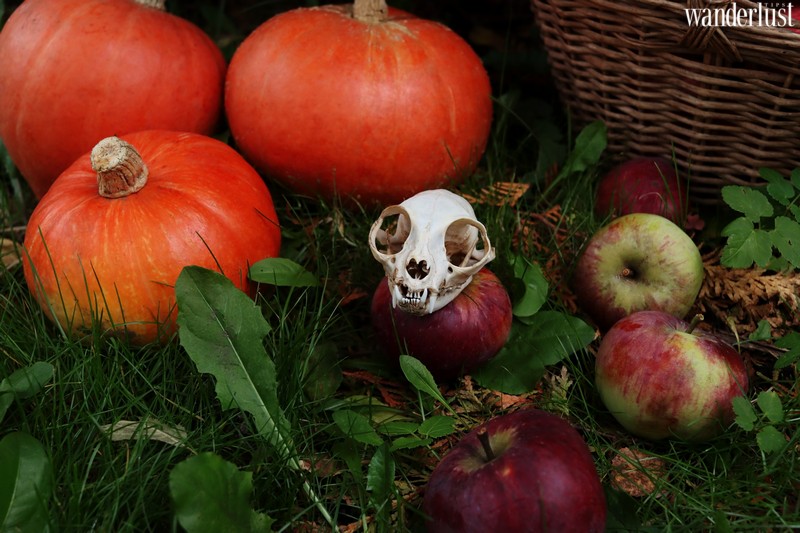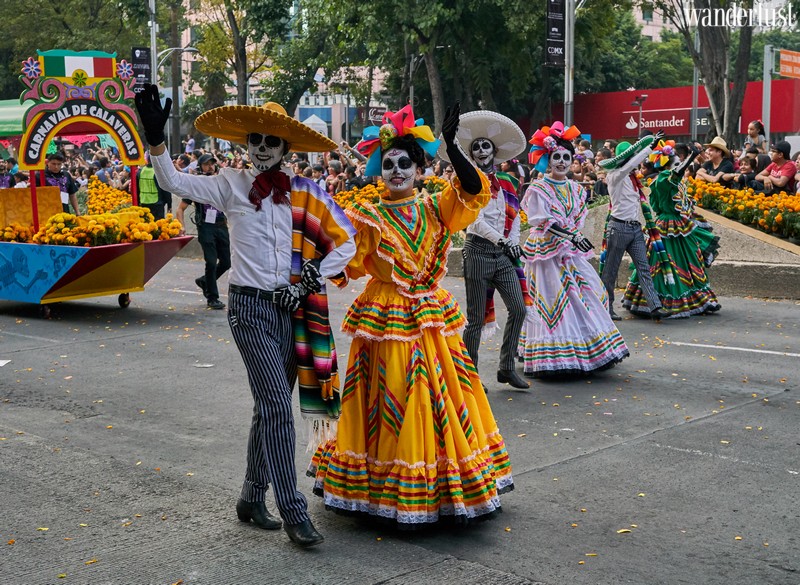We celebrate occasions in life, and so is the demand for the other world. Besides Halloween, here are 5 other events around the world that are also celebrated to remember the deaths, representing different spirit customs and each country’s own rites and rituals.
First, let’s get to know Halloween.
You must have heard a lot of Halloween with spooky festivities, sweets, or trick-or-treat. It has long been widely celebrated as the occasion to honour the souls. It is believed to be begun by the Celts who lived about 2,000 years ago in the area that nowadays has made up Ireland, England, and Northern France. In the northern hemisphere, it is held on the 1st of November, but with celebrations beginning on the evening of 31st October, as the Celtic day began and ended at sunset.

There is another history of Halloween that has been told that it, also All Hallows’ Eve, began solely as a Christian holiday, being the vigil of All Hallow’s Day, which is determined by Pope Gregory III and also celebrated on November 1st since the 8th century. It is a day to honour all saints of the church that have attained heaven. The evening before All Saints’ Day became a holy, or hallowed, eve and thus Halloween.
Now that you know Halloween: How about the others?
Every country has its own belief, rites and rituals, but lots of them hold similar beliefs about their ancestors coming back to Earth. Also for the changing season period, especially from summer to winter, the agricultural culture takes this kind of occasion truly special.
With this spirit, here are the 5 other events/ festivals around the world from 5 different cultures of the world.
1. Samhain, Ireland

Closely related to Halloween, Samhain is a Gaelic festival marking the end of the harvest season and the beginning of winter or “darker-half” of the year. Back then, the Celts celebrated the 1st of November as the end of summer and the beginning of winter, as they believed: it is the end of the light and the start of the dark. That is the one time of the year when the living and the dead world were at their thinnest veils. This allowed spirits of the dead to visit the living.
Hitherto, the meaning of celebrating Samhain remains the same. On this day, people maintain the associated rituals, including dancing, feasting, taking nature walks, and building altars to honour their ancestors. Apples and pumpkins are regularly seen to represent the fall crops, and skulls or skeletons are placed on the altar together with the beloved people’s photos to represent the spirits.
2. Día de los Muertos, Mexico

Speaking of death, it seems like a very gloomy and mourning atmosphere is dragged on. But Día de los Muertos, meaning Day of the Dead in Mexico, is completely nothing of what you’re expecting.
In association with the Catholic celebrations of All Saints’ Day and All Souls’ Day, it is a holiday celebrated on the 1st and 2nd of November. With face paintings, colourful skulls, feast, dance, and big dresses, it has a much less solemn tone and is portrayed as a holiday of joyful celebration rather than mourning. In any way, the multi-day holiday retains its value of paying respects and remembering the deceased friends and family members.
Día de Los Muertos celebrations can be seen with a lot of Calaveras and Aztec marigold flowers – the flower Mexicans associate with death. Locals also place gifts at gravesites and family altars, like candy skulls or chocolates, small trinkets, and their favourite foods and beverages.
3. Obon, Japan


Japan and its homage tradition to its ancestors have become one of their most precious cultural values. Among the celebrations, Obon is a Japanese Buddhist custom to honour the spirits of one’s ancestors. It has been celebrated in Japan for more than 500 years and traditionally includes a dance, known as Bon Odori.
The festival of Obon lasts for three days which normally evolves into a family reunion holiday. The starting date varies within different regions of Japan according to the difference in the way Japanese people calculate their lunar calendar. Mostly, Obon can be seen celebrated around August 13th to 15th.
During Obon, there are lanterns hung in front of houses, dances performed, and offerings put out in front of altars, temples, and sometimes gravesites. Many people will also visit grave sites to clean and wash gravestones and grave markers of their families. As Obon occurs in the heat of the summer, participants traditionally wear yukatas and celebrate huge carnivals with rides, games, and summer festival foods.
4. Ghost Festival, China


This is a traditional Taoist and Buddhist festival held in China and some certain East Asian countries on July 15th of the lunar calendar. It also goes by the name of Zhongyuan Festival in Taoism and Yulanpen Festival in Buddhism.
In Chinese culture, based on the lunar calendar, the 15th of July is called Ghost Day, and July, in general, is regarded as the Ghost Month, in which ghosts and spirits, including those of deceased ancestors, come out from the lower realm, hence, during Ghost Festival, the deceased are believed to visit the living.
Activities during the month would include preparing ritualistic food offerings, burning incense, and burning joss paper – a paper form of material items such as clothes, gold, and other fine goods for the visiting spirits of the ancestors.
5. Guy Fawkes Day (Bonfire Night), England

Among the celebrations showing respect to the deceased one, this event bears one of the most special histories for beginning with one specific person. Its history is related to the failure of the Gunpowder Plot in 1605 O.S. with the conspiracy of placing the plotters beneath the House of Lords. Guy Fawkes, the guard of the plotters, was arrested, and people lit bonfires around London to celebrate King James for surviving the life-ruining attempt and set the date that Guy Fawkes was arrested, 5th of November, as an annual thanksgiving day.
Even though later, the conflicts between different religious parties caused the celebration to become an enjoyable social commemoration, lacking much of its original focus, the date is still widely celebrated and is brought to overseas colonies, including some in North America, where it was known as Pope Day.

